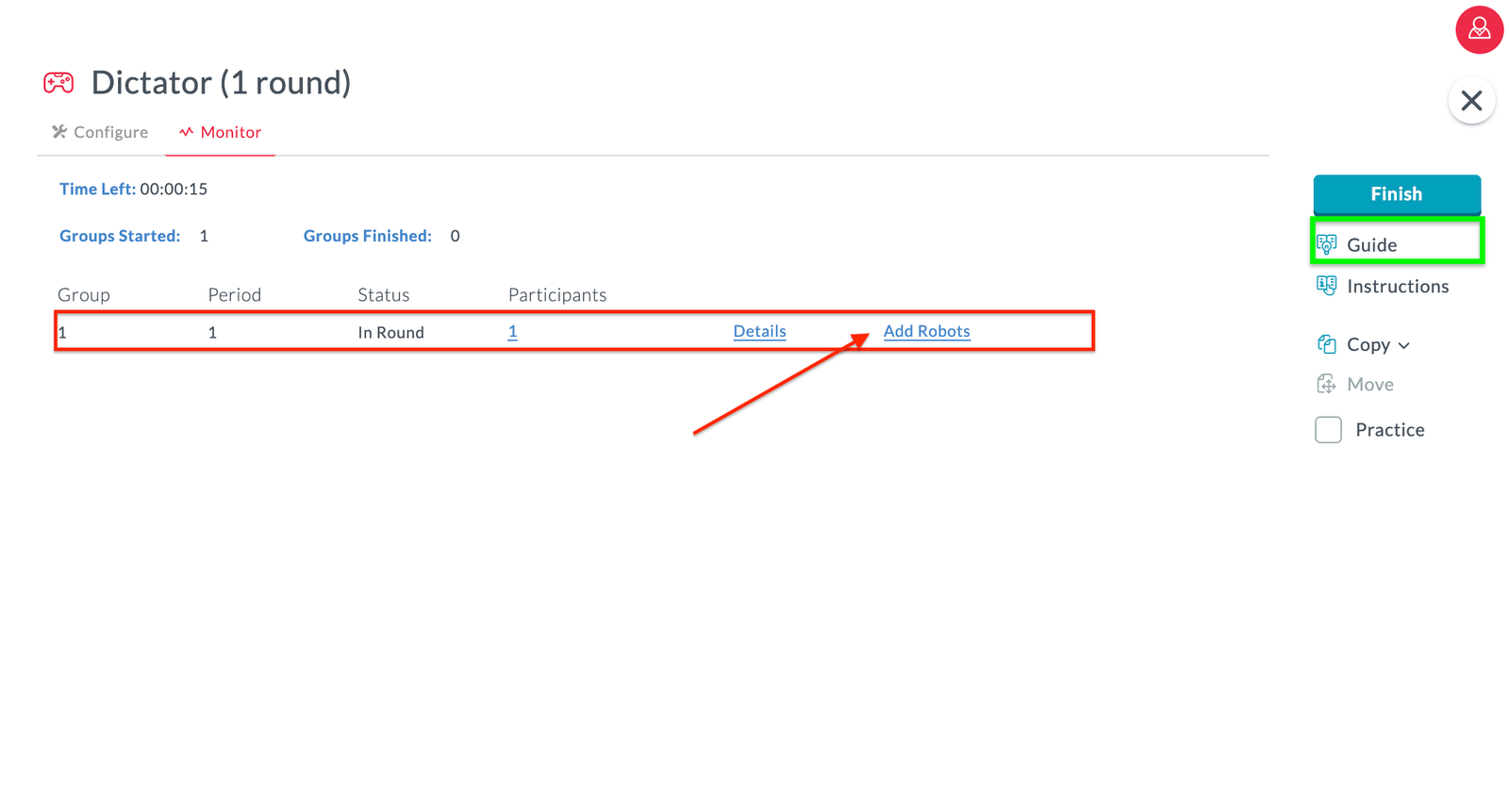Domo Arigato, Mr. Roboto. Our MobLab robots are programmed with strategies (described in the instructor guide) and fill incomplete groups in MobLab, serve as on-demand sparing partners and teach lessons about behavioral differences between human to human and human to machine interactions. Below is an overview of how to maximize the gain from our MobLab robots.

As teaching methods adopt technology advancements not only in but also out of classrooms, MobLab has introduced a versatile playlist, the Online Assignment. It transfers all the MobLab fun and learning from the synchronous to the asynchronous environment. How do we do that? Great question! If you set up an Online Assignment, it will allow you to schedule all your activities for a specified amount of time and anytime a students starts an activity it will fill up that students game with bots up to the specified group size. It’s just like using the robots in the above mentioned way but doesn’t require any further manual input on your part. That way, students don't need to be on the platform simultaneously since each student can play with their robot sparring partner. As you might imagine the use of robots and the Online Assignment format have increased in popularity in the recent months, and we are using the feedback of our instructors to publish more of our content as Online Assignments - stay tuned for more from Mr. Roboto!
We’ve considered the three overlapping use cases for robotic play in the MobLab environment. The versatility of robots makes instructors independent of the daily fluctuations of class size and synchronous or asynchronous usage while throwing in a lesson in behavioral economics for free.
Want to learn more about how to use robots in MobLab games? Chat with one of our human team members!
Robots in Class
Human to human interaction is at the heart of the value that MobLab offers to instructors and students when exploring the world of economics. However, sometimes the class size is not quite a match for the group size of any game. However, no matter how well you plan your experiment in advance, unexpected factors occur such as latecomers, absentees, or simply the that the class size is not optimal for the game. That’s where Mr. Roboto is the friend in need. You can simply use the “Add Robots” function in your instructor console to fill up the missing members of the group and ensure a smooth gameplay according to the specifications you carefully crafted in preparation for your class. To factor in the robots behavior, you can read up on the algorithm we employ for our robots in the Guide (boxed in green) available for each of our games.
Robots in Online Assignments
As teaching methods adopt technology advancements not only in but also out of classrooms, MobLab has introduced a versatile playlist, the Online Assignment. It transfers all the MobLab fun and learning from the synchronous to the asynchronous environment. How do we do that? Great question! If you set up an Online Assignment, it will allow you to schedule all your activities for a specified amount of time and anytime a students starts an activity it will fill up that students game with bots up to the specified group size. It’s just like using the robots in the above mentioned way but doesn’t require any further manual input on your part. That way, students don't need to be on the platform simultaneously since each student can play with their robot sparring partner. As you might imagine the use of robots and the Online Assignment format have increased in popularity in the recent months, and we are using the feedback of our instructors to publish more of our content as Online Assignments - stay tuned for more from Mr. Roboto!Robots as Behavioral Economics Lesson
If any lesson can be safely deducted from research in the branch of behavioral economics, it is this: humans care about fairness. But robots don't have a sense of fairness (unless the coders give it to them). So, how does human to human interaction compare to robot to human interaction? This is where the two previous functions of robots, using them in class with students and playing with only robots offline, come together to tease out the differences in behavior. For example, in an Ultimatum Game do people respond the same way to robots making offers? If a robot splits a $100 pie $99/$1 would you reject it? If a robot is very trusting in a Trust Game do we reciprocate? In both cases, the likelihood is lower. For example, Blount (1995) finds that subjects are more likely to accept low offers if generated by a computer than by a human. Robots can be used to delve into norms and our sense of fairness.We’ve considered the three overlapping use cases for robotic play in the MobLab environment. The versatility of robots makes instructors independent of the daily fluctuations of class size and synchronous or asynchronous usage while throwing in a lesson in behavioral economics for free.
Want to learn more about how to use robots in MobLab games? Chat with one of our human team members!

